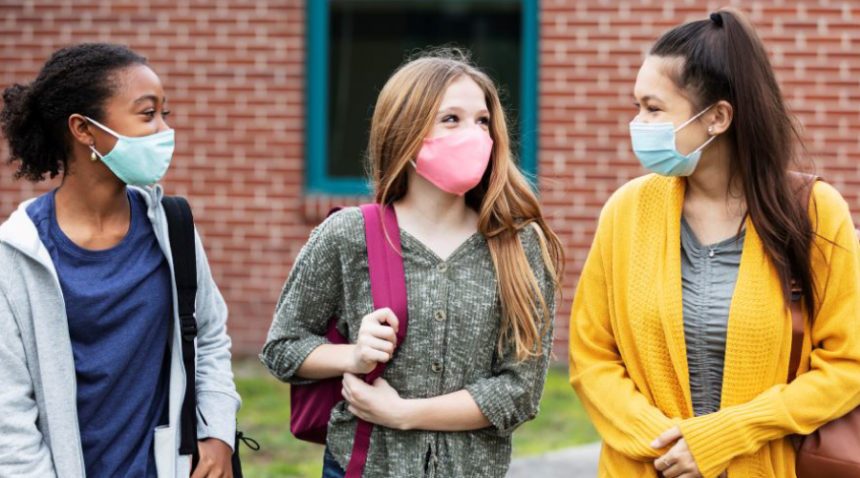With another school year just around the corner, parents, children and teachers can add a fourth “R” to reading, (w)riting and (a)rithmetic—reducing your risk of getting sick.
Common illnesses such as colds, the flu and COVID-19 can run rampant anywhere lots of people gather, and schools are no exception. Omicron variants of COVID-19 are still circulating at a high rate throughout the country.
No one wants their child to get sick or to bring an infection home to other members of the family. While it’s not always avoidable, you can take steps to improve your odds.
“Wearing a mask will reduce the risk of COVID and all these other infections, too,” says UNC Health pediatrician Edward Pickens, MD. “I’m recommending that everyone who goes to school continue to wear a mask. Unfortunately, though, a lot of people are through with masking at this point.”
Simple Steps to Protect Your Student from Illness
How else can you protect your family? Teach children to wash their hands thoroughly and often, Dr. Pickens says.
“Hand-washing is especially important for other infections, things we typically see even without COVID,” he says. “We as adults need to constantly remind children to wash their hands and teach by example.”
It’s also important to make sure your child is up to date on their routine childhood vaccines; check with their pediatrician to find out if any catch-up shots are needed. If your child has received a COVID-19 vaccine and booster, they are much better protected from severe illness.
And don’t forget the basics of healthy living: rest, movement and eating a nutritious, balanced diet. “Get outside and play,” Dr. Pickens says. “Make your immune system as strong as it can be.”
Even before the school year starts, you can help your child improve their sleep by getting them to bed at a consistent time, performing a familiar bedtime routine to prompt sleepiness and avoiding screens in the hour before bedtime.
“I can’t emphasize enough how important it is to get enough sleep, especially for teens,” Dr. Pickens says. “If anything is going to lower your defenses against infection, it’s fatigue.”
Typical Seasonal Sickness Patterns Have Changed with COVID-19
Most infections are airborne, Dr. Pickens says. “Breathing the same air is the main way that these infections are spread.”
Typical seasonal patterns have been thrown off because of the pandemic, he says. Masking and other precautions people took to avoid COVID-19 may have helped prevent other illnesses for a time, but they haven’t gone away.
“We’re seeing some infections now that we’re not used to seeing in the summertime, including flu and RSV,” he says. The usual summer infections are still around, too. “Summer is a time we see strep throat and intestinal infections.”
RSV, or respiratory syncytial virus, causes mild, cold-like symptoms in most people, but it can be more serious in infants and older adults. It’s important to be careful if you have a baby, grandparent or someone with a chronic health condition at home. If your child has a runny nose, cough or fever, they may have RSV that could spread to others.
The current variant of COVID-19—omicron and its subtypes—is extremely contagious, Dr. Pickens says.
“Most children who have been vaccinated are sick for five to seven days, then start getting better,” he says. “Even if your child doesn’t feel very bad, they have to stay home from school if they get COVID. That’s why I think it’s still worth masking.”
If your child has symptoms such as a sore throat, fever or coughing, see your doctor right away. If you need a doctor, find one near you.

